
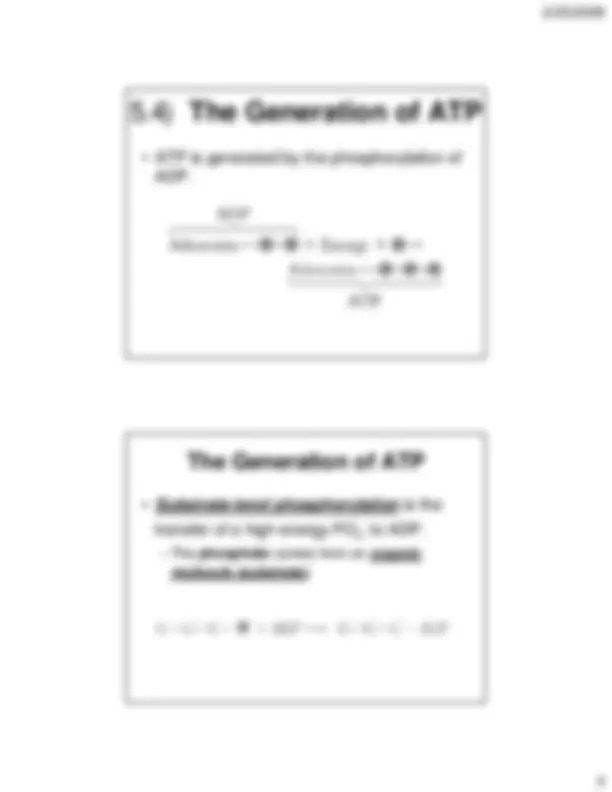
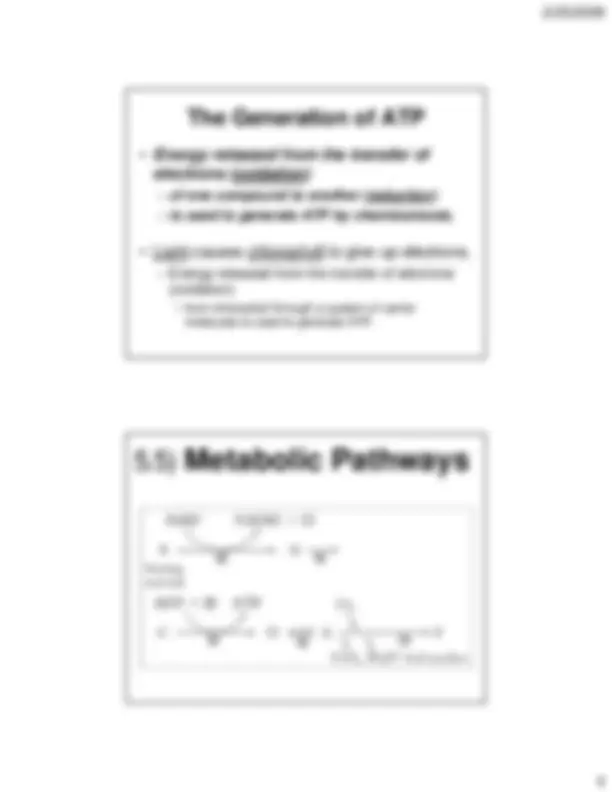
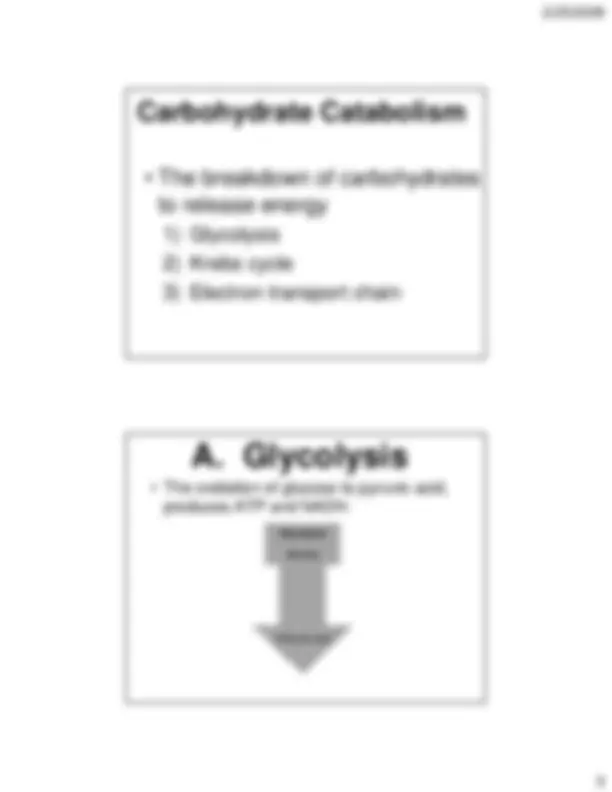
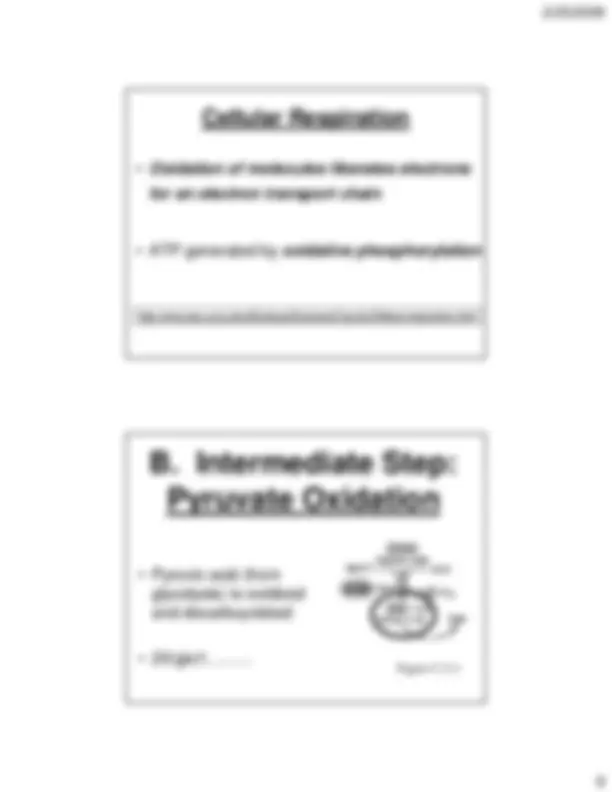
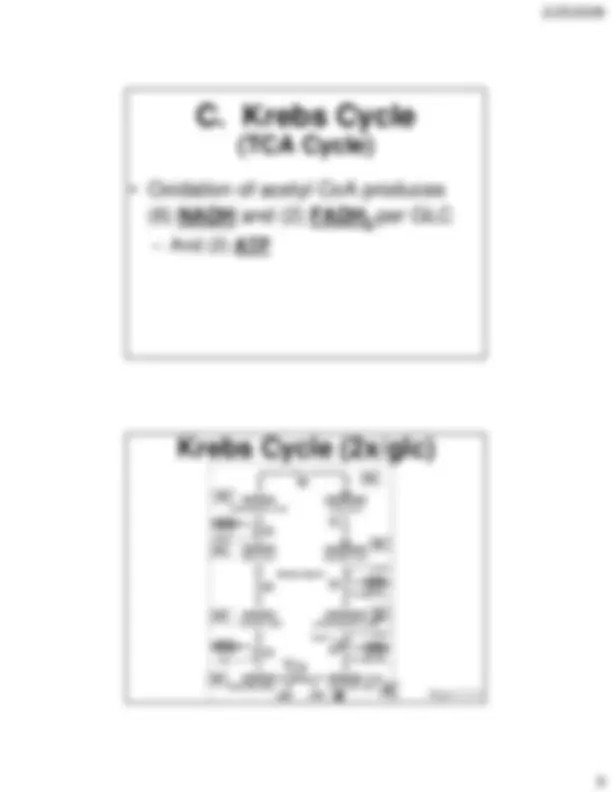
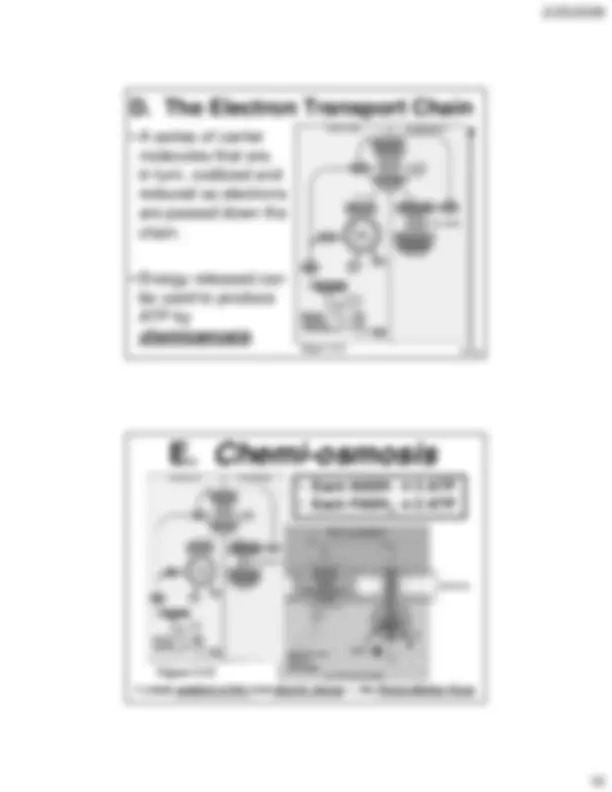
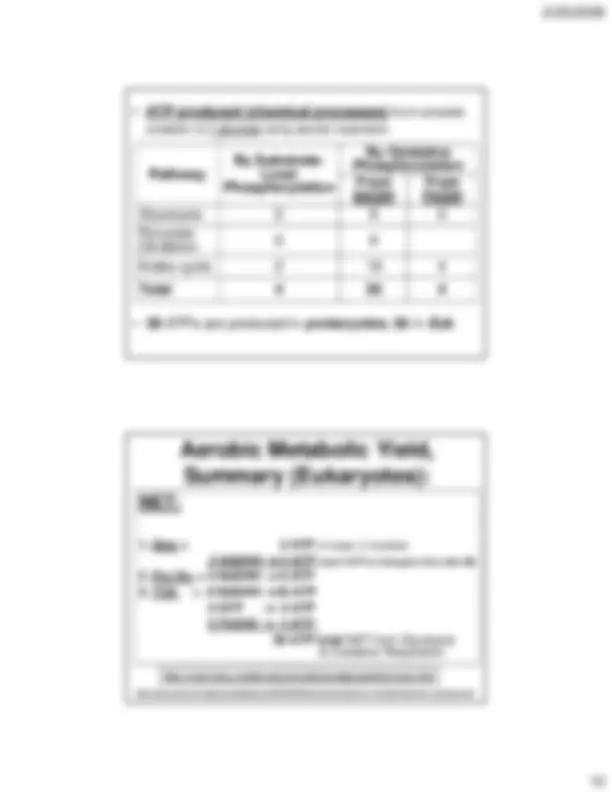
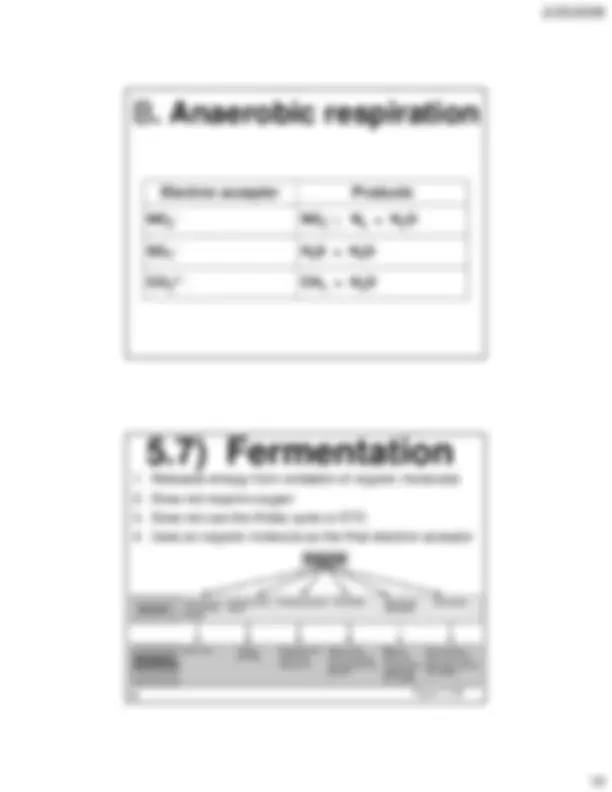
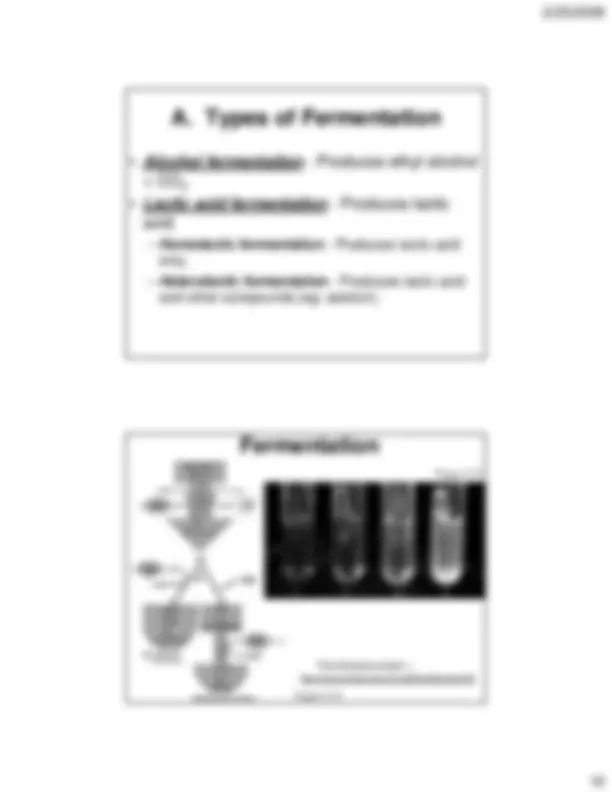


Study with the several resources on Docsity

Earn points by helping other students or get them with a premium plan


Prepare for your exams
Study with the several resources on Docsity

Earn points to download
Earn points by helping other students or get them with a premium plan
Community
Ask the community for help and clear up your study doubts
Discover the best universities in your country according to Docsity users
Free resources
Download our free guides on studying techniques, anxiety management strategies, and thesis advice from Docsity tutors
Material Type: Lab; Professor: Staples; Class: General Microbiology; Subject: Biology; University: San Mateo County Community College District Office; Term: Spring 2009;
Typology: Lab Reports
1 / 16

This page cannot be seen from the preview
Don't miss anything!










5.3) • ••••• • • In biological systems, the 5.3) OxidationReduction Redox reaction with a reduction reaction (always!In biological systems, the OxidationReduction Redox with a reduction reaction ( Oxidation-OxidationOxidation-reaction Oxidation is the removal of electrons. is the removal of electrons.is the gain of electrons.is the gain of electrons. is an oxidation reaction pairedis an oxidation reaction paired -ReductionReduction-Reduction always!). electronselectronsReduction ). (^) are oftenare often Figure 5.
5.5) 5.5) • • Light^ •^ •^ Energy released from the transfer ofelectrons (oxidation Light causes Energy released from the transfer ofelectrons (^ – –^ – ––– Energy released from the transfer of electrons^ of one compound to another (reductionis used to generate ATP by chemiosmosis Energy released from the transfer of electrons(oxidation) of one compound to another (is used to generate ATP by (oxidation)•• from chlorophyll through a system of carrier Metabolic Pathways from chlorophyll through a system of carriermolecules is used to generate ATP.molecules is used to generate ATP. Metabolic PathwaysThe Generation of ATP^ The Generation of ATP causes chlorophyll oxidation) chlorophyll to give up electrons. ) to give up electrons. chemiosmosis.reduction)).
Carbohydrate Catabolism Carbohydrate Catabolism • The breakdown of carbohydrates• • • The oxidation of glucose toThe breakdown of carbohydratesto release energyto release energy1)1) Glycolysis2)2) Krebs cycle3)3) Electron transport chainThe oxidation of glucose to pyruvicproduces ATP and NADH.produces ATP and NADH.GlycolysisKrebs cycleElectron transport chain A. Glycolysis A. Glycolysis pyruvic acid,acid,
B 1.1. Releases energy from oxidation of organic molecules2.2. Does not require oxygenB NOSOCONOSOCO Releases energy from oxidation of organic moleculesDoes not require oxygen. Anaerobic respiration. Anaerobic respirationElectron acceptorElectron acceptor 4 34 333 – ––2 –– 2 – NONOHHCHCH 22 S + HS + H 44 22 – – (^) + H+ H;; NProductsNProducts 22 22 22 OO OO + H+ H (^22) OO 3.3. Does not use the Krebs cycle or ETC4.4. Uses an organic molecule as the final electron acceptor 5.7) Fermentation^ 5.7) Does not use the Krebs cycle or ETCUses an organic molecule as the final electron acceptor Fermentation Figure 5.18b Figure 5.18b
5.8) Catabolism:A. Lipid 5.8) Catabolism:A. Lipid ProteinProtein B. Protein Catabolism B. Protein Catabolism ExtracellularExtracellular (^) proteasesproteases CatabolismCatabolism Figure 5.20 Amino acidsAmino acids Deamination ( Deamination http://www.wiley.com/legacy/college/boyer/0470003790/animations/tca/tca.htm (( http://www.wiley.com/legacy/college/boyer/0470003790/animations/ ÆÆ amineamine), dehydrogenation( ÆÆ ), dehydrogenation acid),acid), decarboxylationdecarboxylation (^) Organic acidOrganic acid Figure 5.22Krebs cycle Krebs cycle tca/tca.htm